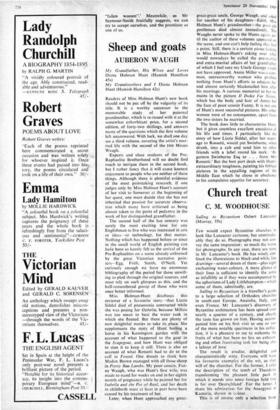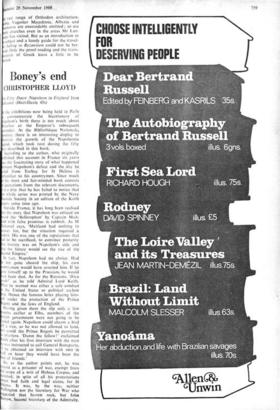Church treat
C. M. WOODHOUSE
Sailing to Byzantium Osbert Lancaster (Murray, 55s) Few would expect Byzantine churches to look like Lancaster cartoons, but unmistake- ably they do so. Photographs may not con- vey the same impression: so much the worse for photographs. In any case, there are none in Mr Lancaster's book. He has wisely con- fined the illustrations to black-and-white line drawings—several dozen of them—plus eight enchanting water-colours. A mere glance at their lines is sufficient to identify the artist as infallibly as if they were accompanied by the aphorisms of Lady Littlehampton—which some of them, admittedly, are. Sailing to Byzantium is a traveller's guide to a large selection of Orthodox churches in south-east Europe, Anatolia, Italy, and even France. Mr Lancaster's discovery of Byzantine architecture has been spread over nearly a quarter of a century, and clearly the taste has grown on him. Having accom- panied him on his first visit to one or two of the more notable specimens in his collec- tion, it is a pleasure to me to welcome the fruits of what has been no less an exhaust- ing and often frustrating task for being also a labour of love.
The result is erudite, delightful and characteristically witty. Everyone will have his favourite examples of the wit, as they will of the churches. For the former, I offer the description of the tomb of Theodoric transforming 'the pleasant little park in which it stands into some foreign field that is for ever Deutschland' For the latter. share his admiration for the Anargyroi at Kastoria, shown in colour.
This is of course only a selection from
vast range of Orthodox architecture. rhja, Yugoslav Macedonia, Albania and oumania are unavoidably omitted ; so are any churches even in the areas Mr Lan- ter has visited. But as an introduction to subject and a handy guide for the travel- , Sailing to Byzantium could not be bet- a). Only the proof-reading and the trans- e ration of Greek leave a little to be sired.











































 Previous page
Previous page